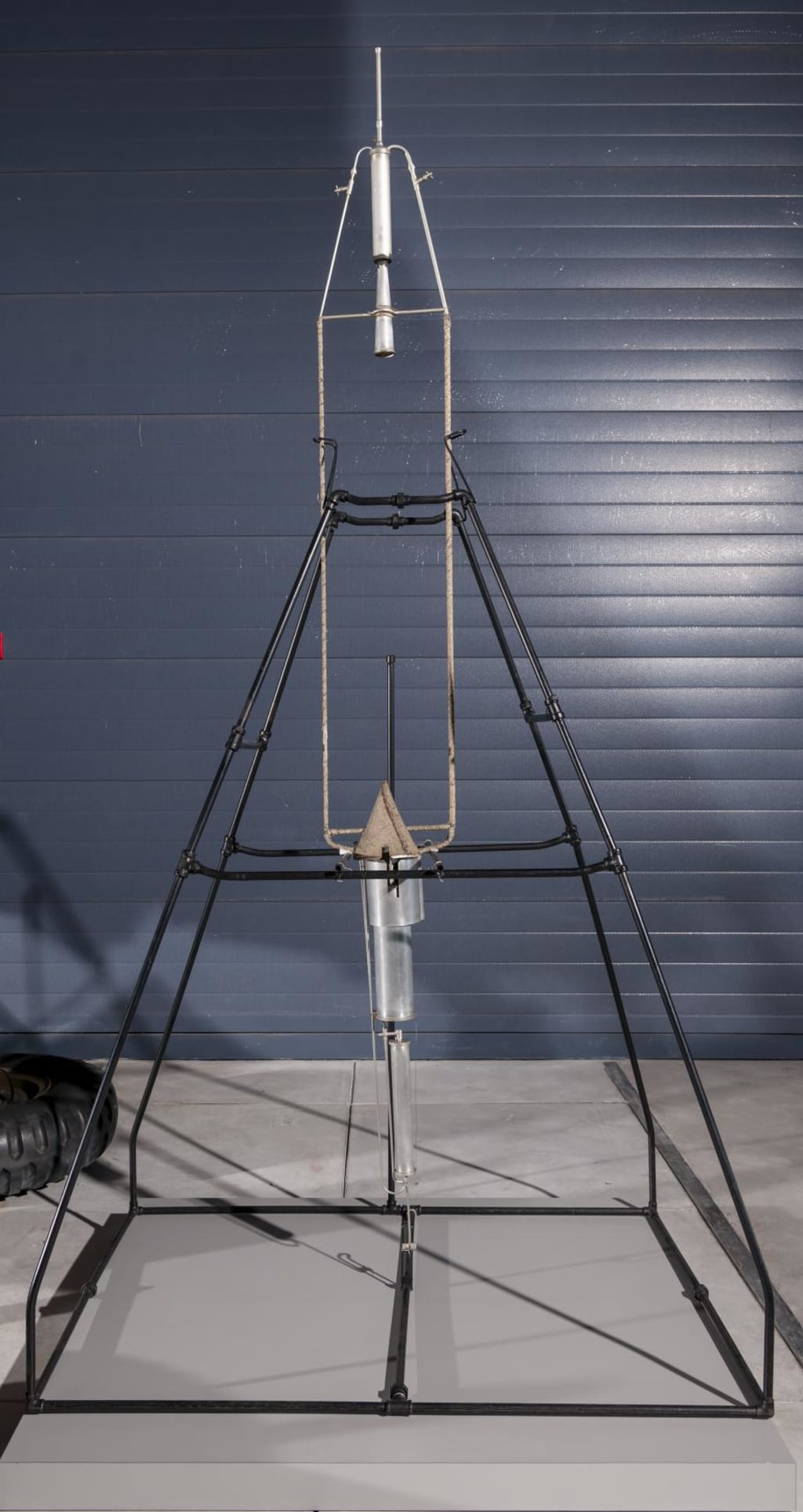THE ROCKET OF THE FIRST ORDER
A Tale of the first rocket.

While different rockets look alike, all have a cone-shaped nose at the top and a big tube holding fuel and the rest of the propulsion system underneath. However, you don't need to set your rocket up that way to fly. We know this because the first modern one looked very different. %in 1926, a rocket called Nell blasted off from a Massachusetts farm%. While it wasn't bound for space, it introduced many of the fundamentals of rocket science that would ultimately get us into orbit and beyond. Nell was by no means the first rocket to ever launch.
Not by a long shot.
Rockets had been around in some form for over a millennium, when the Chinese started packing gunpowder into bamboo or paper tubes to make fireworks.
By the 13th century, they had even made rocket-powered arrows for warfare. But by the early 20th century, these gunpowder-fueled rockets hadn’t evolved into spacecraft. They were hugely inefficient.
When the powder was ignited, only about 2% of the energy that is released actually went into thrusting the rocket up and away. So getting something beyond the stratosphere wasn’t really on the table. And even if a rocket could get that high, it wasn’t common knowledge that it could work in the vacuum of space. After all, all our other flying vessels needed air to move through.
But a physicist named Robert Goddard and he knew rockets could work without air so he got down to business. As early as 1907, he was tinkering around with rockets that used gunpowder and other solid fuels. And over the years, he managed to improve their efficiency by over 3000%. But getting to orbit would take more than that. So he thought outside the box.
His Space Age future would rely on liquid-fuel rockets, instead. Compared to their solid counterparts, liquid fuels are more energy dense. For the same mass of fuel, more energy is released when they burn. They are better at creating thrust for the same amount of mass, too.
But switching to liquid fuels does make for a more complicated setup. You can’t just pour gasoline into a piece of bamboo and set it on fire. In any rocket, you need to combine two types of chemicals, or propellants. One is the fuel, the other is the oxidizer that provides a bunch of oxygen for the fuel to react with and release that rocket-launching energy. And to get the most efficient reaction possible, those propellants need to be combined in just the right proportions.
In solid fuel rockets, you can mix them together and pack that mixture into one big chamber before launch and be confident they’ll stay that way. They’re solid.
Liquids, on the other hand, move. Which means you can’t stir them together and hope they’ll stay perfectly mixed. So you need at least two separate chambers to store each propellant. Then you need another chamber where they can actually meet up and combust. And don’t forget all the plumbing that has to not only connect all those different pieces together, but steadily deliver the right amounts of each propellant, too. So it took some trial and error, but eventually Goddard created Nell.
Goddard used gasoline as the fuel and liquid oxygen as the oxidizer. Modern liquid rockets still use liquid oxygen, but the fuel has varied both over the years and from rocket to rocket.
There is an igniter sitting on top to, as the name implies, make them ignite. In many modern rockets, that would involve some kind of spark plug, but Nell had a bunch of match heads that were set on fire by Goddard’s assistant holding a blowtorch on the end of a long pole.
Not exactly an ideal set-up by today’s standards, but Goddard was developing the very first liquid rocket. He was working with what he had. A combustion chamber sitting at the top of a rocket might seem a little weird to those of us who are used to rockets storing their spacecraft or human cargo up there, but perhaps the most unusual part of this configuration can be found just under the combustion chamber: The nozzle that speeds up the flow of the exhaust and gives the rocket more oomph.
Goddard had to stick a small asbestos heat shield on top of the tank to protect it from getting too hot. He wanted to keep the flame responsible for combusting the fuel as far away from propellant tanks as possible. With nearly a century of hindsight, Goddard’s design might look a little janky to us, but each of his solutions came together on the launchpad.
Nell blasted off on March 16, 1926 and it used up its fuel in under three seconds, climbing about 12.5 meters into the air. And without a parachute, it came crashing down about 56 meters away. Not exactly Mars-bound, but much like the Wright Brothers’ first flight, it was absolutely historic.
Nell showed that liquid-fuel rockets worked, and up until his death in 1945, Goddard kept refining the design. He rearranged some parts, developed more sophisticated pumping systems, added in stabilizers, and made them steerable. And these new models did start to look a lot more like modern rockets. But technically, we can’t draw a straight line between Nell and NASA’s Rocket Garden.
Those are descended from the weapons of war that German scientists developed independent of Goddard’s experiments. However, the ideas Goddard proposed and the successes he had were certainly an inspiration.
In 1959, less than a year after NASA was officially up and running, they named a whole center after the guy. The rockets that humanity has used to explore space don’t look much like Nell. They are enormous, their parts are in different places. And they can lift off with nearly a million times more thrust. But Nell was the simplest possible version of what we use today, and the first proof that something like them was possible. That’s a pretty solid accolade for the first liquid-fuel rocket. Now, you can’t visit Nell in the museum.
About the Creator
Chidi Kalu Ekeh
I'm just a simple guy who loves everything about science. I am glad to share what i found on the things i love (Science).






Comments
There are no comments for this story
Be the first to respond and start the conversation.